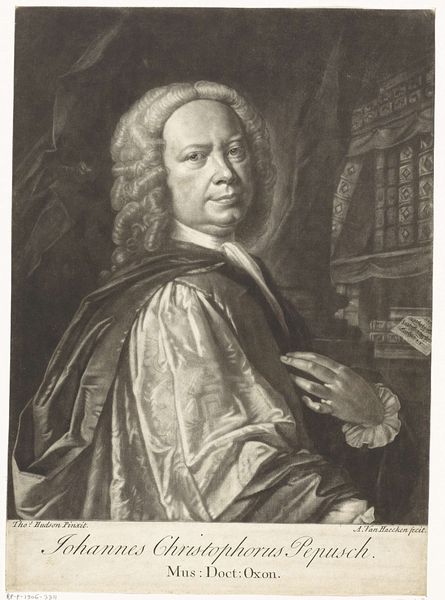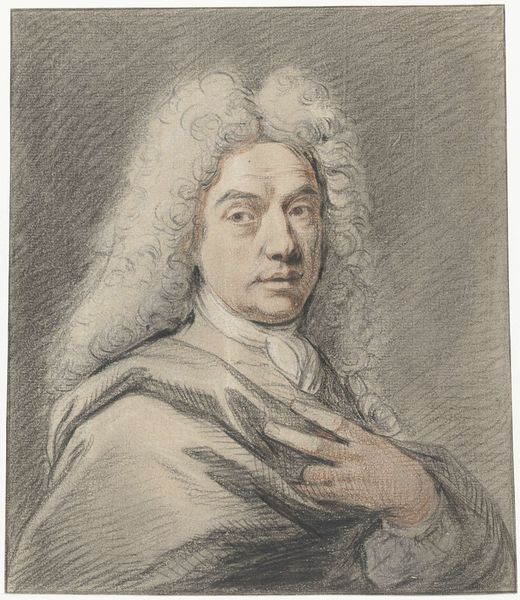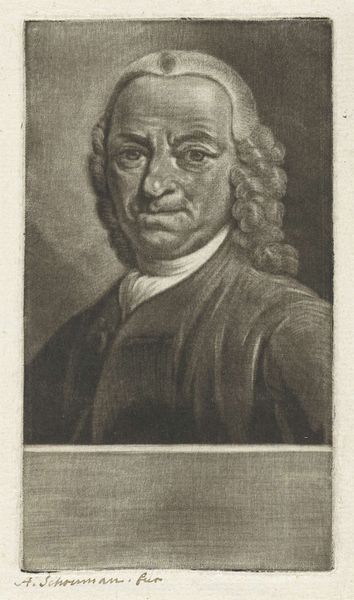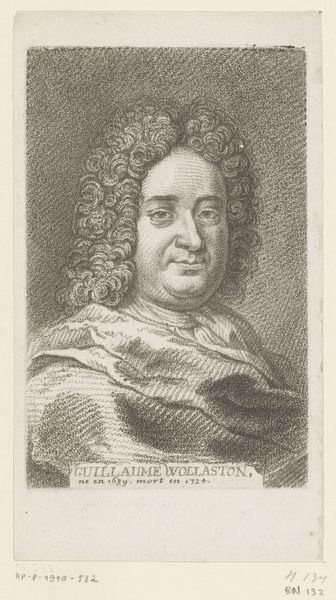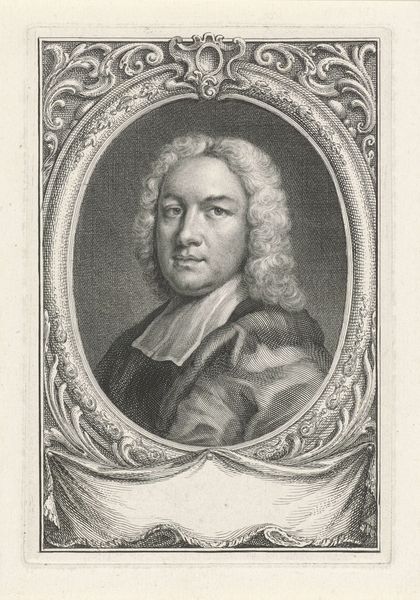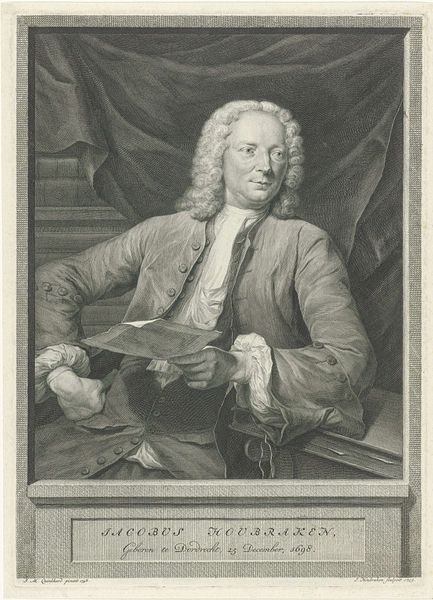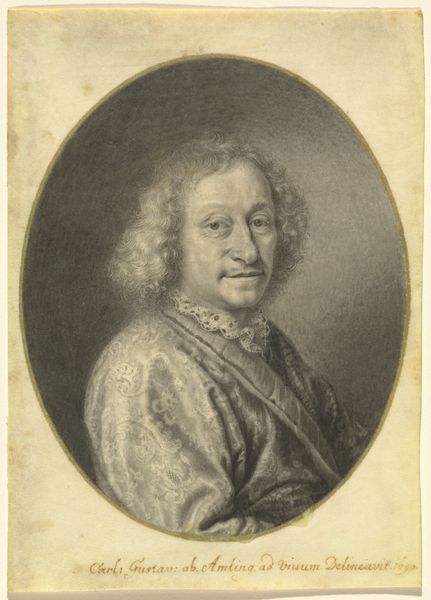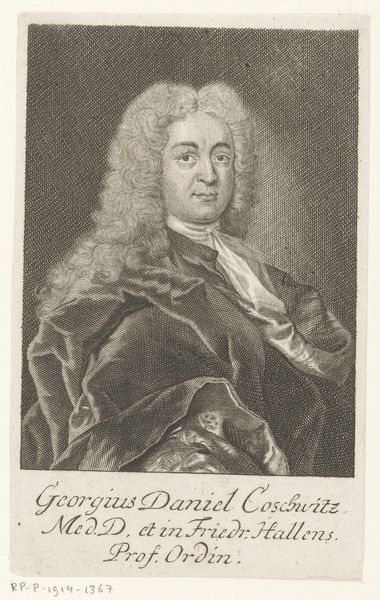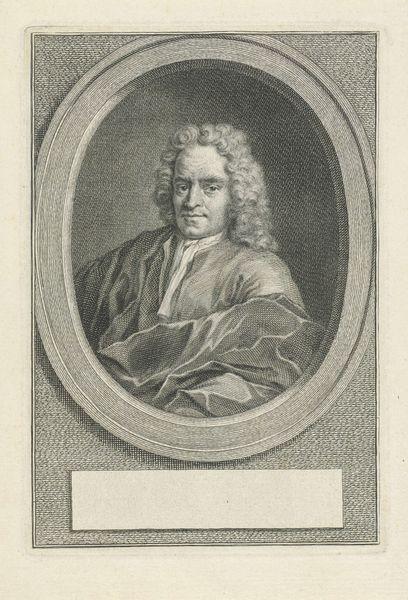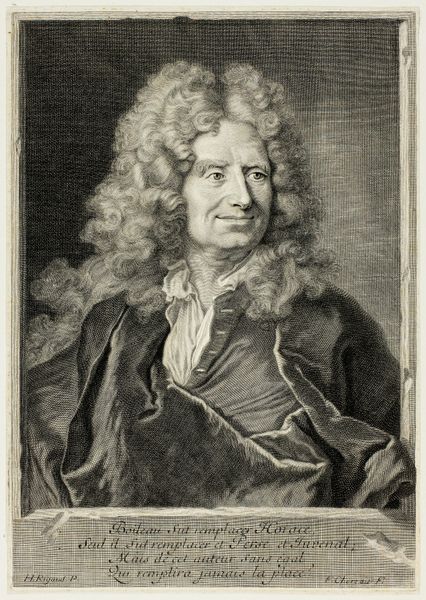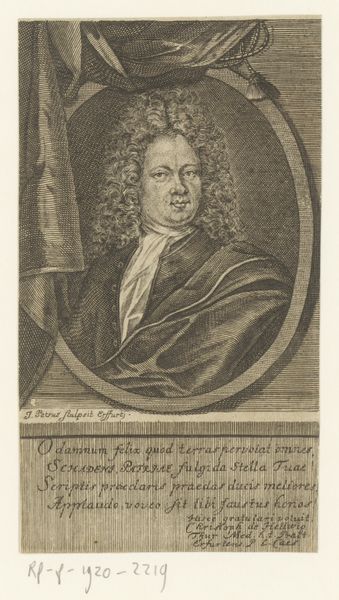
drawing, charcoal
#
portrait
#
drawing
#
facial expression drawing
#
self-portrait
#
baroque
#
charcoal drawing
#
charcoal art
#
portrait reference
#
pencil drawing
#
animal drawing portrait
#
portrait drawing
#
charcoal
#
facial portrait
#
portrait art
#
fine art portrait
Dimensions: height 141 mm, width 116 mm
Copyright: Rijks Museum: Open Domain
Editor: We’re looking at a self-portrait by Jacob de Wit, created sometime between 1705 and 1754, a drawing done in charcoal. It's remarkable, actually; the delicate rendering gives a strong sense of the artist’s presence, even a certain introspection. What do you see in this work from a formal perspective? Curator: Indeed. Let's consider first the medium, charcoal. The artist skillfully uses the inherent qualities of charcoal to generate form and depth. Notice the subtle gradations of tone. De Wit coaxes form from shadow with what looks like little effort, but observe the texture near the edges of his form. What is your reading of it? Editor: I would say that is where the drawing ends and the support appears, which frames and centers the work. The baroque style is recognizable by the expressive asymmetry and intense tonality that gives the sitter character and a lifelike effect, with a kind gaze directed towards us. Curator: Precisely. The textural variation introduced through the medium is essential to the composition as a whole. This highlights the interplay between the subject and the material used to bring it to life. Editor: That tension between subject and material seems critical to understanding the drawing, giving it a modern edge as the artist engages with his support. I see that tension between process and subject contributing a new reading to the conventional Baroque approach to portraiture. Curator: Yes, our formal reading sheds light not only on the artist's technical ability, but also on the theoretical complexities embedded within the artwork. The semiotics reveal to us new avenues to investigate regarding medium, artist, and Baroque conventions. Editor: I hadn't considered the texture to that extent, now it offers a new avenue for research, which I really value.
Comments
No comments
Be the first to comment and join the conversation on the ultimate creative platform.

